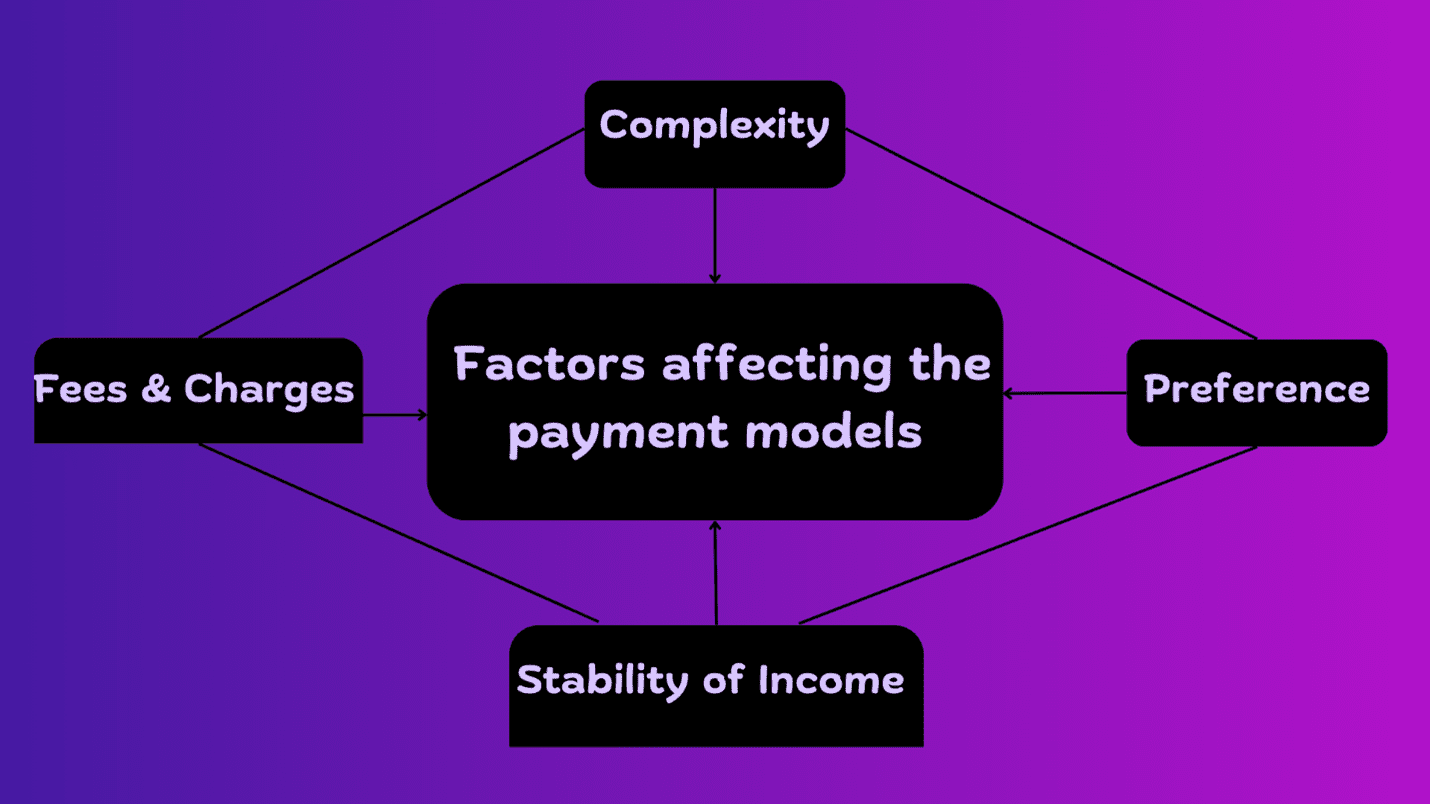As a freelancer, there can be a few challenges and questions that may arise initially, such as how to get paid or how freelance pricing works. We have already discussed how to get paid here. Then comes the question of how to price your service. It is essential to understand different payment models for clarity and informed decision-making.
Start by doing market research. Every industry has its own way of functioning and pricing can differ based on your nature of work. Getting in touch with fellow freelancers to scrutinize how they decide their costs would help you to understand market standards, prices and how things work.
There are various factors you must consider while deciding your service price. This gives your venture some structure. When you are aware and sure of the pricing models, you will build a better relationship with your client as it will give them a sense of security and trust working with you.
Before we discuss the different payment models, here are a few factors that you may want to keep in mind:

Complexity- If a project is too complex and you price the client with your standard price, it will be unfair to you. But if a project is not as complex and your price is high, the client will be upset and may not wish to work with you again.
Preferences- The complexity of a project may depend on the kind of preferences the client has. It is important for you to communicate and create clear objectives for the project so that you can give an estimate.
Stability of Income- You may want to keep in perspective to price your service in a way that ensures stability and steady flow of income. Even as a freelancer, you must ensure you’re having a stable source of income.
Fees & Charges- Remember to consider the various fees and charges, especially when doing international projects. When you want to receive international payments, there are different types of fees and charges involved. For seamless cross-border payments, connect with BRISKPE to receive money from abroad and save your time and money on hefty fees.
Now that we have looked at the factors that play a role in determining or changes in price, let us look at the different pricing models:

Hourly
Here, you get paid based on hours. So, you trade your time for money. You give the estimated price for the project depending on the number of hours you may spend and get paid for it. But this can be tricky, if you quote an estimate for said number of hours and go beyond them, it can upset the client to pay you more. If you quote an estimate and spend less time working on the project, it may be enough for your hard work. So, this may not be a great option if you’re just starting out. When you become sure of the hours you will spend on a project or for short-term projects, this can be a good option.
Daily
This model also pays based on the time spent on the project. Here, you will get paid for a full day of work, typically 6-8 hours. This is almost like working for a 9-to-5. Although as compared to the Hourly model, you will focus more on tasks than hours. If you wish to work for lesser hours but still end up pricing for the entire day, it will not be fair or ethical.
Weekly
You will be paid based on the number of hours spent on the project in the entire week. This is like the previous two models. Here the hours spent are predetermined so you will have to work or complete the task in this duration. This is also like a full-time job. If you fail to work for the given number of hours, you won’t be working ethically, and it will be unfair towards the client. Most freelancers do not wish to work for so many hours, making it a less likely option.
Monthly Retainer
Here, you will be booked by the client for the entire duration of the project. This will be better for the client as they can contact you as per their schedule. This is great for long-term clients. The disadvantage is that you will have to commit to only one project and be available on the client’s schedule.
Fixed Fee
In this model, you have a fixed price for the projects you take. This seems good for long-term projects as the trust and relationship between you and the client is already established. But this may not be best for new projects. If a client has many preferences, then having a fixed fee may not be fair to you. If the project doesn’t need much customisation and time, then it won’t be fair to the client to pay more. Additionally, it doesn’t consider the time spent on the project.
Value-based
This model is another model which focuses on quality over quantity. Here, you quote your price based on the value and outcome expected from the project. If the client has many preferences and intricate details that need to be focused on, then the cost would go up. The greater the outcome value, the greater the price and the basic outcome expected, the lower the price.
Conclusion
You can prefer using any of these models according to what works best in favour of you and your clients. You may also choose to use a combination of these or use various models for the same client. Apart from these, if you’re a freelance writer or editor, you also have the option to price based on per-word or per-page. Additionally, if you want to know about the different modes of transactions available for accepting payments as a freelancer, check out our blog on how to get paid as a freelancer, where we suggest methods that work best for domestic and cross-border payments.








